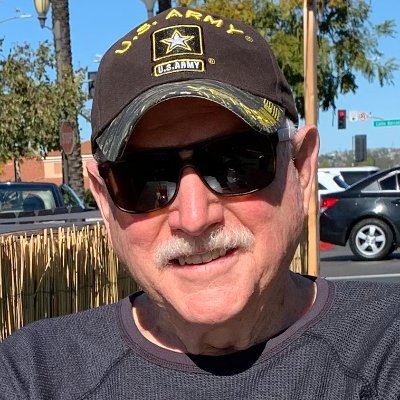At least once every year I find it useful to take a look at the late Elmore Leonard’s 10 Rules of Writing. It is sage advice from a master. Every writer should read these rules and remember them. I’m doing my part by posting them here for your edification and enjoyment.
I began reading Elmore Leonard’s books before I knew anything about writing or even that I wanted to be a writer. Back then, many of his books were Westerns filled with gritty characters, compelling stories, and robust, convincing dialogue.
I remember reading Last Stand at Sabre River and Hombre, both of which became successful movies. Later, after Leonard had moved from westerns to crime and suspense stories, I read Mr. Majestyk, The Big Bounce, and the Moonshine War.
From 2010 to 2015, I watched with great pleasure the TV series “Justified,” based on Leonard’s book “Raylan” and partly written by Leonard. That series ran its course, but I encourage you to look at it. I am sure it is available on Netflix. Timothy Oliphant plays Raylan to a “T.” I also encourage you to check out the new Justified series on FX called Justified: City Primeval. U.S. Marshal Raylan Givens has left the hollers of Kentucky and is now in Detroit battling Detroit’s badasses. You can also stream it on HULU. You won’t be disappointed.

Elmore Leonard was a writer’s writer. He could spin a great story and create characters you loved to hate or hated to love and some you simply learned to tolerate because they made the other characters interesting.
If you like reading William Faulkner or Thomas Wolfe, you probably will not like reading Elmore Leonard. As brilliant as those two writers were, their stream-of-conscious narration probably drove Leonard nuts.
Leonard believed the writer should never get in the way of the story. (NOTE: See “Hooptedoodle″ at the end of Leonard’s rules)
I am not sure when Leonard wrote his 10 Rules of Writing, but I found them a few years ago and filed them away.
Some of you may already know those ten rules, but I am betting many of you don’t. So let me share them with you today. Read them, consider them, and most of all, try to follow them when you write your books. I think you will be glad you did.
Here they are in Elmore Leonard’s own words:
These are rules I’ve picked up along the way to help me remain invisible when I’m writing a book, to help me show rather than tell what’s taking place in the story. If you have a facility for language and imagery and the sound of your voice pleases you, invisibility is not what you are after, and you can skip the rules. Still, you might look them over.
1. Never open a book with the weather.
If it’s only to create atmosphere and not a character’s reaction to the weather, you don’t want to go on too long. The reader is apt to leaf ahead, looking for people. There are exceptions. If you happen to be Barry Lopez, who has more ways to describe ice and snow than an Eskimo, you can do all the weather reporting you want.
2. Avoid prologues.
They can be annoying, especially a prologue following an introduction that comes after a foreword. But these are ordinarily found in nonfiction. A prologue in a novel is backstory, and you can drop it in anywhere you want.
There is a prologue in John Steinbeck’s Sweet Thursday, but it’s O.K. because a character in the book makes the point of what my rules are all about. He says: “I like a lot of talk in a book, and I don’t like to have nobody tell me what the guy that’s talking looks like. I want to figure out what he looks like from the way he talks . . . Figure out what the guy’s thinking from what he says. I like some description but not too much of that. . . Sometimes I want a book to break loose with a bunch of hooptedoodle. Spin up some pretty words, maybe or sing a little song with language. That’s nice. But I wish it was set aside so I don’t have to read it. I don’t want hooptedoodle to get mixed up with the story.” (NOTE: I already violated that rule in my Finding Billy Battles trilogy. Sorry, Elmore. I won’t do it again.)

3. Never use a verb other than “said” to carry dialogue.
The line of dialogue belongs to the character; the verb is the writer sticking his nose in. But said is far less intrusive than grumbled, gasped, cautioned, lied. I once noticed Mary McCarthy ending a line of dialogue with “she asseverated” and had to stop reading to get the dictionary. (NOTE: I learned this important rule at the University of Kansas in journalism school. It has served me well.)
4. Never use an adverb to modify the verb “said” …
…he admonished gravely. To use an adverb this way (or almost any way) is a mortal sin. The writer is now exposing himself in earnest, using a word that distracts and can interrupt the rhythm of the exchange. I have a character in one of my books tell how she used to write historical romances “full of rape and adverbs.”
5. Keep your exclamation points under control.
You are allowed no more than two or three per 100,000 words of prose. If you have the knack of playing with exclaimers the way Tom Wolfe does, you can throw them in by the handful.
6. Never use the words “suddenly” or “all hell broke loose.”
This rule doesn’t require an explanation. I have noticed that writers who use “suddenly” tend to exercise less control in the application of exclamation points.
7. Use regional dialect, patois, sparingly.
Once you start spelling words in dialogue phonetically and loading the page with apostrophes, you won’t be able to stop. Notice the way Annie Proulx captures the flavor of Wyoming voices in her book of short stories Close Range.
8. Avoid detailed descriptions of characters.
In Ernest Hemingway’s Hills Like White Elephants, what do the “American and the girl with him” look like? “She had taken off her hat and put it on the table.” That’s the only reference to a physical description in the story, and yet we see the couple and know them by their tones of voice, with not one adverb in sight.
9. Don’t go into great detail describing places and things.
Unless you’re Margaret Atwood and can paint scenes with language or write landscapes in the style of Jim Harrison, but even if you’re good at it, you don’t want descriptions that bring the action, the flow of the story, to a standstill.
And finally:
10. Try to leave out the part that readers tend to skip.
A rule that came to mind in 1983. Think of what you skip reading a novel: thick paragraphs of prose you can see have too many words in them. What the writer is doing, he’s writing, perpetrating hooptedoodle, perhaps taking another shot at the weather, or has gone into the character’s head, and the reader either knows what the guy’s thinking or doesn’t care. I’ll bet you don’t skip dialogue.
My most important rule is one that sums up the 10.
If it sounds like writing, I rewrite it.
Or, if proper usage gets in the way, it may have to go. I can’t allow what we learned in English composition to disrupt the sound and rhythm of the narrative. I attempt to remain invisible, not distract the reader from the story with obvious writing. (Joseph Conrad said something about words getting in the way of what you want to say.)
If I write in scenes and always from the point of view of a particular character — the one whose view best brings the scene to life — I’m able to concentrate on the voices of the characters telling you who they are and how they feel about what they see and what’s going on, and I’m nowhere in sight.
What Steinbeck did in Sweet Thursday was title his chapters as an indication, though obscure, of what they cover. “Whom the Gods Love They Drive Nuts” is one, and “Lousy Wednesday” is another.
The third chapter is titled “Hooptedoodle 1″, and the 38th chapter, “Hooptedoodle 2″ as a warning to the reader as if Steinbeck is saying: “Here’s where you’ll see me taking flights of fancy with my writing, and it won’t get in the way of the story. Skip them if you want.”
Sweet Thursday came out in 1954 when I was just beginning to be published, and I’ve never forgotten that prologue.
Did I read the hooptedoodle chapters? Every word.
And there you have it: Elmore Leonard’s 10 Rules of Writing. They are well worth remembering and following. Of course, there are some who believe there are no rules when it comes to writing. I don’t believe Leonard himself felt his ten rules were inviolable. To me, they seem like common sense–especially when it comes to avoiding the dissemination of hooptedoodle.
[If you enjoyed this post, please consider subscribing to ForeignCorrespondent and tell your friends to subscribe. IT’S FREE! WHAT A DEAL! If you’ve received this from a friend and would like to be added to our distribution list for future blog posts, please enter your email address in the sign-up for notifications box at https://ronaldyatesbooks.com/category/foreign-correspondent. You can also find my commentaries on Substack at https://ronyates.substack.com/ and the American Free News Network at https://afnn.us. And please feel free to comment. WE LOVE COMMENTS!]


This is a wonderful post, Ron. I like clean writing with little descriptive words and am drawn to writers who embody this style. I didn’t know of Leonard’s 10 rules till now. So helpful! Thank you.